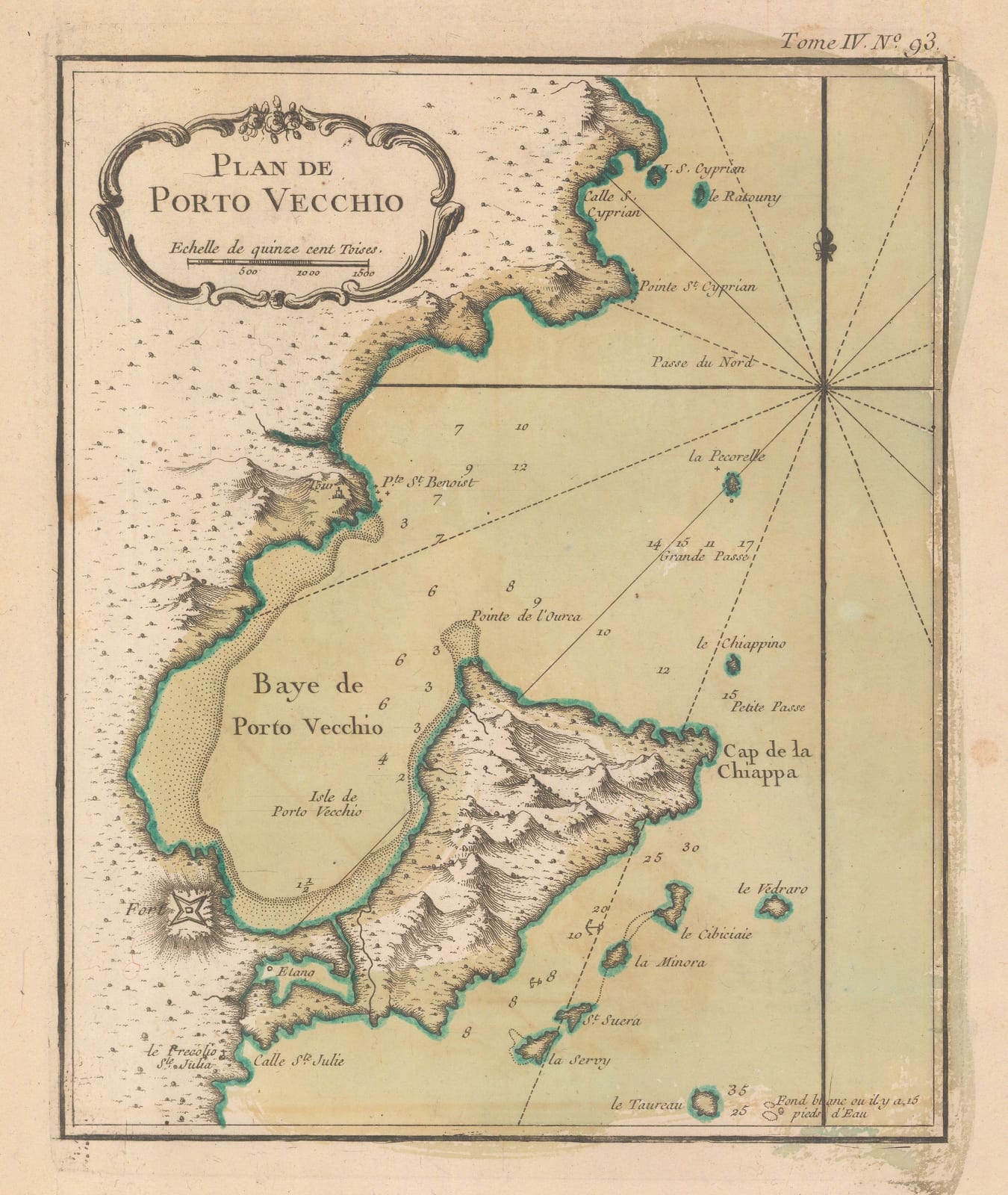Jacques-Nicolas Bellin
24 x 19 cm
Reduced chart of Porto Vecchio on the southern part of Corsica.
This map, on this orientation, is specific to the Petit Atlas Maritime. Jacques Ayrouard, the “Pilot Reale” or navigator on the Royal Galley based in Marseille, issued a map of the same area in 1746 although on a different orientation with west pointing to the bottom of the map. The Pilot Reales were assimilated into the French Navy in 1748 and Ayrouard’s survey and work would have become part of the French Hydrographic Office.
Although Porto Vecchio was a very attractive natural harbour, its proximity to marshes on the mainland made it into an area notorious for its occurrence of malaria. At least twice in its history, the whole population of the city succumbed to the disease and it was not until World War II that the marshes were drained and the settlement became safely habitable.
Jacques-Nicolas Bellin was one of the greatest 18th century map makers. He specialised in hydrography and was appointed to the French Hydrographic office at the young age of 18 in 1721. Twenty years later he was named the first “Ingenieur de la Marine” for the “Depot des Cartes et Plans de la Marine” as well as Hydrographer to Louis XV of France. Over a fifty year career, he published a multitude of important maps often from first hand sources provided by naval officers, merchants and government sources. His level of access was extraordinary. As well as publishing his own atlases, he was a contributor to many seminal French works on exploration, including Abbee Raynal’s “Histoire des Deux Indes”, Abbee Prevost’s “Histoire Generale des Voyages” and Pierre de Charlevoix’s “Histoire et Description Generale de la Nouvelle France”.
In 1762, Bellin decided to publish one of his most popular and accessible works: “Le Petit Atlas Maritime”. The work came out in 1764 in five volumes and proved extremely popular. Many of the maps were reduced versions which Bellin had either contributed or published previously. The five volumes usually contain between 575 and 590 maps with variations noted between individual examples. As the preparation took only two years, it is very likely that Bellin had a majority of these copper plates already available. The initial financial support for the atlas was from Etienne-Francois, Duc de Choiseul, a highly placed French politician who was credited for strengthening both the army and navy. Due to its accessibility, he perceived the ”Petit Atlas Maritime” as a method of publicising both the work of the “Depot de la Marine” and the Navy to the general public. Bellin includes a long dedication to Choiseul on the front of each volume.
For collectors today, the work presents one of the widest selection of extremely desirable smaller maps. They provide clear, concise and attractive geographical records of some of the most inaccessible and exotic areas of the world in the mid-18th century. Bellin was part of a group called “Les Philosophes”, the French counterpart to the pioneers of the English Age of Reason and his maps are a lasting legacy from the Age of French Enlightenment.
Original colour. [MED2366]


